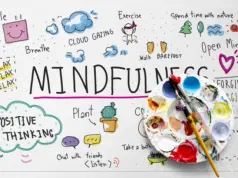Let’s break up! Breaking a habit is not like breaking any other inanimate object; it takes time and patience, a lot of patience. However, it has the potential to transform one’s life.
According to a Harvard study that used an app to track participants, most adults spend 47% of their waking lives daydreaming. Much of this time is spent fantasising about the future and making up scenarios that make you happy. In some of these imagined scenarios, you’ve probably quit smoking or given up junk food, and you’re a younger and slimmer version of yourself. Most people live inside their heads, in their wonderland. So how can you truly bring these imaginative stories to life?
The solution is to break a bad habit, which is understandably easier said than done. You won’t be asked to do the obvious thing like reduce stress in your life, but rather to look at these three proven ways that serve as a handy toolkit that might guide you to look at your bad habit in a different light, like a friend who got off track in life and how you could help them get on the right path.
- The Why – Simon Sinek’s Golden Circle can serve as a guiding principle in all aspects of life. He believes that one must begin with the why, rationalising the purpose and cause behind every action. Once you have that, it becomes a powerful motivator propelling you forward. There are certain reasons why you picked up the habit in the first place. So, a compelling reason for letting go of your habit will inspire you.
- Understanding your body – You can’t just wake up one day and decide to change your life completely. You get closer to your goal and take small baby steps when you acknowledge this. Each day of your journey will be different; growth is never linear, so give yourself some leeway. “Enjoyable behaviours can prompt your brain to start releasing a chemical known as dopamine,” according to National Institutes of Health research. When you do something repeatedly, and dopamine is present, it strengthens the habit even more.” Dopamine is crucial in determining whether a habit sticks or breaks. Keeping a journal helps you become self-aware of your body’s needs and holds you accountable. It will give you a better understanding of what triggers you and how to deal with it in the future. 10 steps ahead and 2 steps behind is still 8 steps ahead, so abandon the all-or-nothing mindset.
- Replace, Replace, Replace – When you set out to break a habit, don’t just stop doing it completely; instead, find a replacement because the brain finds it difficult to completely stop doing something. Humans are action-oriented in nature. If you give the brain a better option, it will choose it, so make sure you have a constant inner monologue reminding your brain, heart, and soul that they need to let go of the habit.
Habits are things one does without energy or effort. So making an action that you force your brain to do now into a habit may be a long way off, but it is essential to remember that you are, after all, a human being. You will experience boredom occasionally, and your method may need to be revised. There are countless books and articles on this subject that offer you a quick fix for quitting a bad habit, but only you know your story and how difficult it is. Remember that it is only through trial and error that you will discover what works best for you. Be prepared for setbacks because that is the way of life. This quote can come in handy on tough days; Steve Kamb says, “When you screw up, skip a workout, eat bad foods, or sleep in, it doesn’t make you a bad person. It makes you human. Welcome to the club.”












































